Disclosure: This article contains affiliate links. We may earn a commission from purchases at no extra cost to you, which helps our travel content.
The morning air carries the fragrance of jasmine and incense as I make my way through Bangalore's bustling streets at dawn. It's my third visit to India's Silicon Valley, but this time, I've come with a singular purpose: to look beyond the gleaming tech campuses and startup culture that have come to define this metropolis. My wife Priya first brought me to her hometown fifteen years ago, and while her anthropological research took her to remote villages, I found myself drawn to the juxtaposition of ancient traditions and modernity that defines Bangalore. This vibrant city, properly called Bengaluru, has been a crossroads of South Indian culture for centuries, long before it became synonymous with India's IT revolution. Over the next week, my journey will take us through thousand-year-old temples, dynastic gardens, vibrant markets, and into the homes of traditional artisans—revealing a Bangalore that many visitors, fixated on its technological prowess, never experience.
Sacred Spaces: Temples That Transcend Time
My exploration begins where Bangalore itself began—at the 16th-century Bull Temple (Dodda Basavana Gudi) in Basavanagudi. Standing before the massive monolithic Nandi statue, carved from a single granite boulder, I'm struck by how this sacred space remains a living center of devotion rather than merely a tourist attraction. The morning puja (worship ritual) is underway, and I join locals in quiet contemplation as the priest performs the ancient ceremonies.
From here, I venture to the stunning Someshwara Temple in Halasuru, one of the city's oldest neighborhoods. Built during the Chola period, its intricate stone carvings tell stories of deities and celestial beings that have watched over Bangalore for centuries. What fascinates me most is how these spaces maintain their spiritual significance despite the frenetic urban development surrounding them.
The ISKCON Temple presents a different experience—a modern spiritual complex that has become one of Bangalore's most visited sites. While architecturally contemporary, the devotional practices here connect directly to ancient Vedic traditions. I time my visit to coincide with the evening aarti (lamp ceremony), when the temple comes alive with devotional singing and the rhythmic ringing of bells.
For those seeking to document these sacred experiences, I've found my compact travel tripod invaluable for capturing low-light temple interiors without disturbing the reverent atmosphere. The lightweight design makes it easy to carry during long days of exploration.

💡 Pro Tips
- Visit temples early morning (6-8am) for a more authentic experience with fewer tourists
- Dress modestly with shoulders and knees covered; women may want to bring a scarf for head covering at certain temples
- Remove shoes before entering temple sanctums and be prepared with socks if the stone floors are hot
Lalbagh: Where Royal Gardens Meet Botanical Science
Lalbagh Botanical Garden offers a meditative respite from urban intensity and a window into Bangalore's royal heritage. Established in the 18th century by Hyder Ali and expanded by his son Tipu Sultan, these gardens reflect the Mughal passion for horticulture while housing one of India's most important botanical research centers.
I arrive just after sunrise, when the garden welcomes serious walkers and yoga practitioners. The morning light filtering through ancient trees creates an atmosphere conducive to the kind of mindfulness practice I've incorporated into my travels since that transformative retreat in Japan years ago. Finding a quiet spot near the lotus pond, I spend twenty minutes in zazen meditation before continuing my exploration.
The glasshouse, modeled after London's Crystal Palace, stands as a colonial-era landmark and hosts spectacular flower shows during Republic Day and Independence Day celebrations. But it's the collection of rare trees that captures my attention—some specimens are over 100 years old, silent witnesses to Bangalore's transformation from garden city to tech hub.
At the center of Lalbagh sits a 3,000-million-year-old rock formation, one of the oldest geological formations on earth. Standing atop this ancient outcrop provides perspective—both literally, with panoramic views of the city, and philosophically, as one contemplates human endeavors against the backdrop of geological time.
During my visit, I'm grateful for my field binoculars to observe the remarkable birdlife that makes Lalbagh home. The compact size makes them easy to carry, while the clarity reveals details of migratory species and resident birds alike.

💡 Pro Tips
- Visit between 6-9am to see the garden at its most peaceful and to avoid midday heat
- The first and second Sundays of each month feature guided botanical walks led by experts
- Wear comfortable shoes as proper exploration requires 2-3 hours of walking on various terrains
The Vanishing Crafts: Artisans of Bangalore
Beyond monuments and gardens, Bangalore's cultural heritage lives in the hands of its artisans—many practicing crafts that have been passed down through generations but now face the pressures of modernization. Through contacts from my wife's anthropological work, I've arranged visits to several workshops where traditional crafts continue despite economic challenges.
In a small workshop in Pottery Town, I spend a morning with Venkatesh, a third-generation potter whose family has been creating terracotta works for over a century. His skilled hands transform simple clay into beautiful vessels using techniques unchanged for generations. What strikes me is how he balances tradition with adaptation—creating both ritual items for temples and contemporary pieces that appeal to urban consumers.
"The clay remembers the hands that shape it," he tells me in Tamil, which my wife translates. "Each piece carries not just my touch, but my father's and grandfather's as well."
In Thigalarpet, I visit a family of Kalamkari artists who practice this intricate form of hand-painted textile art. Using natural dyes extracted from roots, bark, and minerals, they create elaborate mythological scenes on cotton fabric. The process involves twenty-three painstaking steps, including mordant applications, multiple dyeing stages, and detailed hand-painting with bamboo quills.
What becomes evident throughout these visits is how these traditional crafts connect to larger spiritual and cultural frameworks. The designs and techniques aren't merely decorative but carry symbolic meanings and connect practitioners to ancestral knowledge systems. Many artisans speak of their work as a form of meditation—a sentiment that resonates deeply with my own experiences.
To document these remarkable craftspeople, I rely on my mirrorless camera with its silent shooting mode that doesn't disrupt their concentration. The excellent low-light performance proves essential in the dimly lit workshops where many traditional artisans prefer to work.

💡 Pro Tips
- Call workshops before visiting as many are family operations with irregular hours
- Ask permission before photographing artisans or their work—most appreciate interest but some have concerns about design copying
- Purchase directly from artisans rather than souvenir shops to ensure fair compensation and authentic pieces
Culinary Heritage: Beyond Dosas and Filter Coffee
No cultural exploration would be complete without examining food traditions, and Bangalore offers a fascinating culinary landscape that reflects its position at the crossroads of multiple South Indian cultural influences. While the city is famous for its crispy dosas and aromatic filter coffee (both of which I indulge in daily), my interest lies in understanding the deeper cultural contexts of local cuisine.
I begin at Thindi Beedi (Food Street) in the historic VV Puram area. As evening falls, this narrow lane transforms into a gastronomic wonderland where vendors prepare regional specialties that have sustained Bangaloreans for generations. The akki roti (rice flour flatbread) served with coconut chutney offers a window into Karnataka's agrarian traditions, while holige (sweet stuffed flatbread) connects to festival celebrations and ritual offerings.
For a deeper dive into traditional cooking methods, I join a home cooking class in Malleswaram, one of Bangalore's oldest planned neighborhoods. Here, Lakshmi, a septuagenarian Brahmin cook, demonstrates the preparation of bisibelebath (spiced rice with lentils) and kosambari (cucumber-lentil salad) while explaining how these dishes connect to seasonal rhythms and Ayurvedic principles of balance.
"Food is not just sustenance," she explains while deftly tempering mustard seeds in hot ghee. "It is medicine, it is offering, it is connection to ancestors."
What fascinates me is how cooking implements themselves carry cultural significance. The kal chatti (soapstone vessel) used for preparing rasam has specific properties that influence flavor, while the traditional ammi kal (grinding stone) produces textures that modern appliances cannot replicate. These tools represent embodied knowledge passed through generations of women whose culinary expertise often went unrecognized beyond domestic spheres.
To record these ephemeral culinary experiences, I use my travel journal to note recipes, techniques and the stories behind each dish. Its acid-free pages preserve the turmeric stains and cooking notes that will help me recreate these experiences back home.

💡 Pro Tips
- Visit VV Puram Food Street between 7-10pm for the full experience when all vendors are operating
- Look for establishments displaying 'Military Hotel' signage—these traditional eateries serve meat dishes with unique Bangalore-style preparations
- When invited to homes, bringing fruit or sweets from a reputable shop is an appropriate gesture
The Rhythm of Festivals: Experiencing Bangalore's Ceremonial Calendar
Fortunate timing places my visit during Sankranti, one of Karnataka's most significant harvest festivals. This celebration of the sun's northward journey provides a perfect lens through which to observe how ancient astronomical knowledge, agricultural traditions, and spiritual practices intertwine in contemporary Bangalore life.
In the residential area of Jayanagar, families invite me to witness their rangoli creations—intricate geometric patterns made with colored rice flour, flower petals, and occasionally illuminated with small oil lamps. These temporary artworks adorning thresholds represent both aesthetic expression and spiritual practice, with patterns passed down through generations of women. The mathematical precision of these designs reveals sophisticated understanding of symmetry and proportion that predates modern mathematical concepts.
At Bugle Rock Park, I observe community celebrations where elders teach younger generations traditional folk dances and songs specific to Sankranti. What strikes me is how these performances create continuity between past and present—young tech professionals who spend their days writing code now move through dance steps their ancestors performed centuries ago.
The festival's agrarian roots become evident at the Ellu Birodhu ceremony, where a mixture of sesame seeds, jaggery, coconut, and peanuts is exchanged between neighbors with the phrase "Ellu bella thindu, olle maathadi" ("Eat this mixture and speak good words"). This simple ritual reinforces community bonds and acknowledges the harvest that sustains the community.
Through my wife's academic connections, I'm invited to a traditional Yakshagana performance—an elaborate theatrical form combining dance, music, dialogue, and costume that originated in coastal Karnataka. The all-night performance of mythological episodes features performers who have trained since childhood in this demanding art form that requires both physical stamina and deep cultural knowledge.
The experience reinforces my belief that cultural preservation requires both documentation and living practice. These traditions remain vibrant not as museum pieces but as evolving expressions that continue to hold meaning for contemporary practitioners.
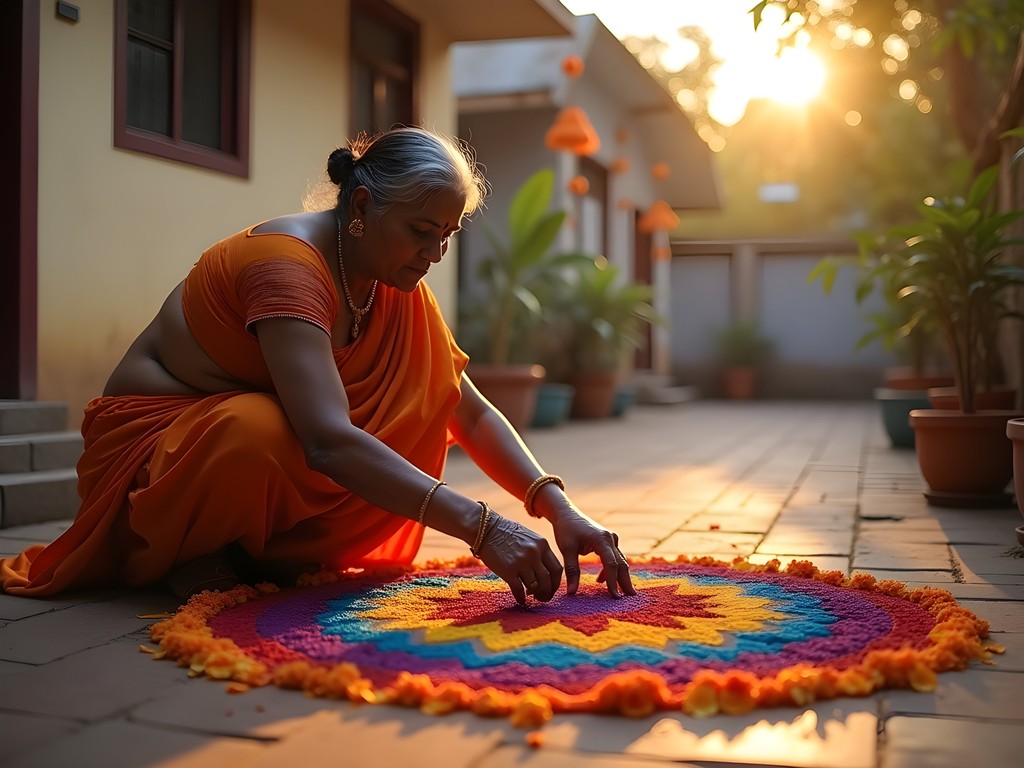
💡 Pro Tips
- Research festival dates before planning your trip—major celebrations offer the richest cultural experiences
- Ask local contacts about neighborhood celebrations, which are often more authentic than commercial events organized for tourists
- Bring small gifts when invited to home celebrations—quality sweets from established shops are always appropriate
Final Thoughts
As my week in Bangalore draws to a close, I find myself sitting in the peaceful gardens of the Karnataka Chitrakala Parishath art gallery, reflecting on the layers of culture I've encountered. What strikes me most is how this city maintains its cultural foundations even as it races toward technological futures. The software engineer who begins her day with temple prayers, the startup founder who spends weekends learning classical Carnatic music, the international business consultant who meticulously prepares traditional festival foods—all embody Bangalore's remarkable cultural continuity amid transformation. For visitors willing to look beyond the obvious tech narrative, Bangalore offers profound insights into how traditions adapt without disappearing, how ancient wisdom finds expression in contemporary life, and how cultural identity remains resilient through centuries of change. As you plan your own cultural journey to this multifaceted city, remember that the most meaningful experiences often come through patient observation and genuine connection with local residents. The Bangalore that will stay with you isn't found in guidebooks but in the lived traditions that continue to give this dynamic city its soul.
✨ Key Takeaways
- Bangalore's richest cultural experiences are found in everyday practices and seasonal festivals that continue despite modernization
- Early mornings offer the best opportunity to observe traditional practices at temples, markets and gardens
- Personal connections with local residents provide access to authentic cultural experiences beyond tourist circuits
- The juxtaposition of ancient traditions with cutting-edge technology creates Bangalore's unique cultural landscape
📋 Practical Information
Best Time to Visit
November through February offers pleasant temperatures and includes major festival seasons
Budget Estimate
$80-120 per day for mid-range accommodations, local transportation, meals at quality establishments, and cultural activities
Recommended Duration
5-7 days allows for unhurried cultural exploration beyond surface experiences
Difficulty Level
Moderate (Requires Some Advance Planning And Local Contacts For Authentic Experiences)
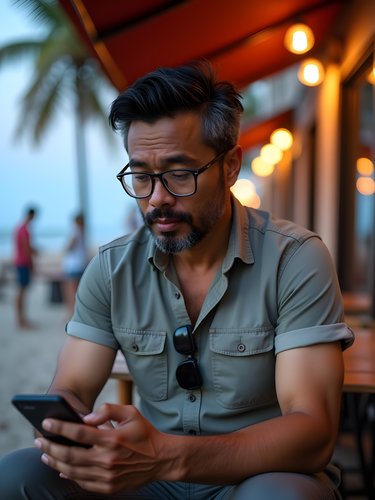







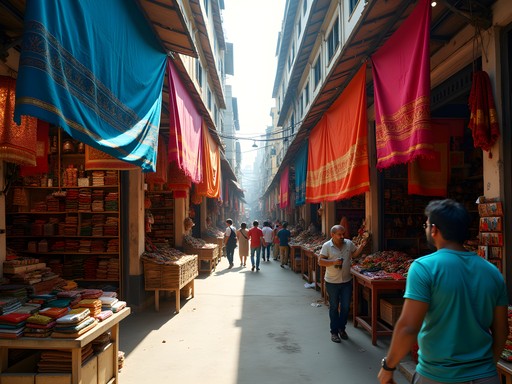


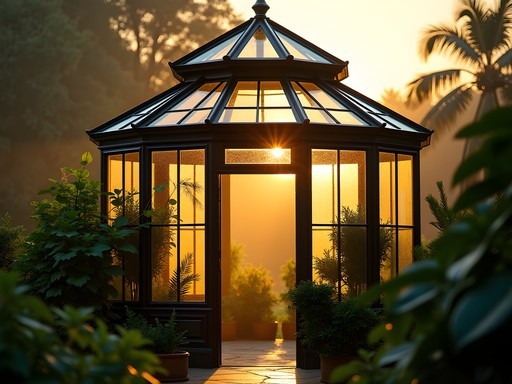

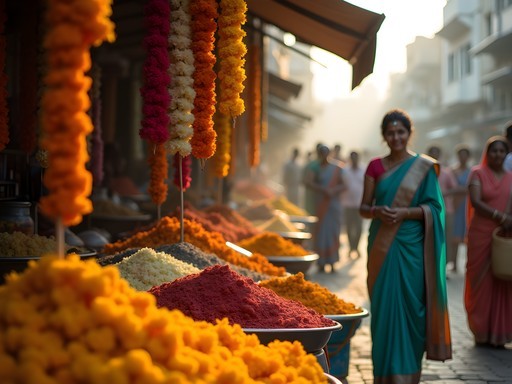
Comments
summerway
I'm heading to Bangalore next month for a 3-day business trip. If you had to pick just TWO cultural experiences from your list that could be done in limited time, which would you recommend?
Kenji Kumar
Great question! I'd say Lalbagh early morning (it opens at 6am) followed by breakfast at MTR for authentic South Indian food. Then for evening, the Bangalore Palace gives you that fascinating blend of Indian and British colonial influence. Both are accessible and give you a good cultural overview without going too far from the city center.
summerway
Perfect, thanks! Both sound manageable even with my packed schedule.
Frank Garcia
Great piece on Bangalore's dual identity, Kenji! I spent 3 weeks there last year and was struck by the same contrast. The city manages to balance its tech boom with centuries of tradition in a way that feels less forced than other rapidly modernizing cities. One spot I'd add to your list is the Sunday book market at Avenue Road - found incredible old Sanskrit texts and colonial-era maps there. The sellers have fascinating stories if you take time to chat with them. Also, for anyone visiting, the Karnataka Folklore Museum is often overlooked but provides excellent context for understanding the regional cultural differences within Karnataka state.
Kenji Kumar
Thanks Frank! Can't believe I missed the Sunday book market - definitely adding it to my list for next time. The folklore museum was on my itinerary but ran out of time. Appreciate the thoughtful additions!
redadventurer
Those dosas look incredible! Food is always my favorite part of traveling.
redstar
How safe is it for solo female travelers to explore these cultural sites? Planning my first India trip and Bangalore is on my list!
summerway
I went solo last year! Bangalore felt safer than other Indian cities I visited. Just use normal precautions - I used Uber a lot and visited temples during busy hours. The botanical garden was super relaxed too.
redstar
That's reassuring, thanks! Did you visit any of the craft workshops mentioned in the article?
summerway
I did the silk weaving one! It was tucked away in a tiny side street but totally worth finding. I used this guidebook which had detailed directions to these hidden spots.
wavegal
This is exactly what I needed! Everyone talks about Bangalore's tech scene but I was hoping to explore the cultural side during my business trip next month. Those temple photos are gorgeous!
Kenji Kumar
Thanks @wavegal! Definitely make time for Bull Temple early morning if you can - much less crowded and the light is magical for photos.
wavegal
Will do! I've got Sunday morning free so that's perfect timing.
wandermaster
Been to Bangalore 3 times for work but never saw these places. Bookmarking for next trip!
Timothy Jenkins
Kenji, I appreciate how you've highlighted the cultural dimensions of Bangalore beyond the obvious tech narrative. Having documented the city's transformation over the past decade, I've observed the precarious balance between development and heritage preservation. Your section on vanishing crafts is particularly poignant. I'd add that the Karnataka Chitrakala Parishath regularly hosts workshops where visitors can learn traditional art forms directly from master practitioners. I found the Kalamkari demonstration particularly fascinating. For those planning visits, I recommend timing your trip around the Karaga Festival (usually April) for a truly authentic cultural experience. The procession through the old city areas offers incredible photographic opportunities and insights into local religious traditions. I captured some of my best work using my travel tripod for the low-light evening ceremonies.
mountainmaster9448
When exactly is the Karaga Festival? Worth planning a trip around it?
Timothy Jenkins
It follows the lunar calendar, so dates shift yearly, but typically falls in March-April. Absolutely worth planning around - it's one of Karnataka's oldest festivals and showcases traditions dating back over 300 years. Just prepare for crowds!
luckypro
WOW! Just booked my trip to Bangalore and your post has me SOOOO excited!! Can't wait to explore Lalbagh gardens and try all that amazing food you described! Those dosas look incredible in your photos! 😍😍😍
skyhero
Great post! How difficult is it to visit the temples if you don't speak the local language? Any tips?
wandermaster
Not the author but I've been to Bangalore temples. Most have English-speaking guides or at least signage. Bull Temple and ISKCON are very tourist-friendly. Just dress modestly and remove shoes!
skyhero
Thanks for the tips! That's reassuring to know.
Sarah Powell
Kenji, this is exactly the perspective on Bangalore that's missing from most travel coverage. I spent three weeks there last year and found myself drawn to the same cultural contrasts you highlighted. The Someshwara Temple was particularly moving during the morning puja - did you happen to witness that? I also discovered some incredible textile artisans in the smaller markets north of Lalbagh who are still practicing traditional Mysore silk weaving techniques. The intergenerational knowledge there is rapidly disappearing as younger people move into tech. Your section on culinary heritage resonated deeply - I took a cooking class with a local grandmother who taught me seven different ways to use curry leaves!
skyhero
Sarah, any recommendations on which cooking class to take? Heading to Bangalore in January and would love to learn authentic local cuisine.
Sarah Powell
I took a class with Cooking with Shashi - it was in her home and completely authentic. She focuses on Karnataka home cooking rather than restaurant-style dishes. Book well in advance!
Venture X
Premium card with 2X miles, $300 travel credit, Priority Pass